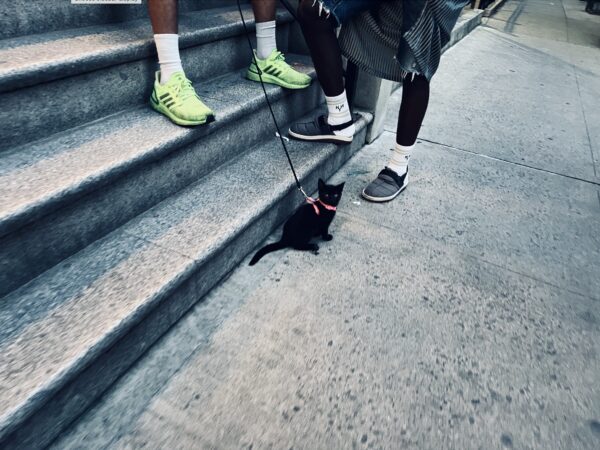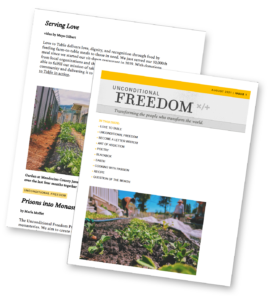by Michael Lesser
Michael comes to Free Food Harlem with a diverse background in engineering, teaching, film production, as a classically trained chef and not so classically trained handyman. He brings with him a passion for the culinary arts, love of all types of food, and shares techniques to create memorable dining experiences for our Free Food patrons.
I can hear them in the distance. Like a swarm of bees or approaching drones.
Packs of boys and some women too, cruising with style on dirt bikes and quads. Wheels raised high in the air weaving through the civilian traffic. The culture here, taking dirt biking to the city streets and making it their own.
There’s an actual flair to the neighborhood at 125th street.
The men like their kicks bright and bold as an homage to or to emulate their sports or hip-hop heroes. A pair of white Nikes with orange and yellow accents stride by on the feet of a black man wearing a red jacket, black t-shirt and a do-rag tied tight around his head under his black ball cap. I look down at my own tired feet and see my scuffed, paint splattered, hard-workin tired shoes and wonder, “Where’s the spring in my step?”
The wail of the ambulance, the music wafting from the street vendors’ boom boxes, a blend of hip-hop, rap, jazz, R & B, soul, puts an end to these existential thoughts.
Malcolm X Blvd., Adam Clayton Powell, Frederick Douglass, The Apollo, Cotton Club, and Savoy, these names also let me know where I am and what this place is. To say this place is a melting pot is not only an understatement, it’s a lie. Harlem is the unapologetic deep cauldron of Black culture in America.
While crossing the street I expect the crowd to move over to go around the car jutting into the crosswalk—they don’t, and I brush arms with a woman next to me.
Her skin is black and soft and her arm feels strong.
She gives me a look that says, “You do not have permission here to accidentally touch me especially if you are white.” I try to convey as much dignity and respect for her as I can, but inside I feel embarrassed and just plain clumsy. I continue walking on the crowded street but now with more gravity of where I am and who I will be making meals for.

 Get access to the monthly Rehumanization Magazine featuring contributors from the front lines of this effort—those living on Death Row, residents of the largest women’s prison in the world, renowned ecologists, the food insecure, and veteran correctional officers alike.
Get access to the monthly Rehumanization Magazine featuring contributors from the front lines of this effort—those living on Death Row, residents of the largest women’s prison in the world, renowned ecologists, the food insecure, and veteran correctional officers alike.